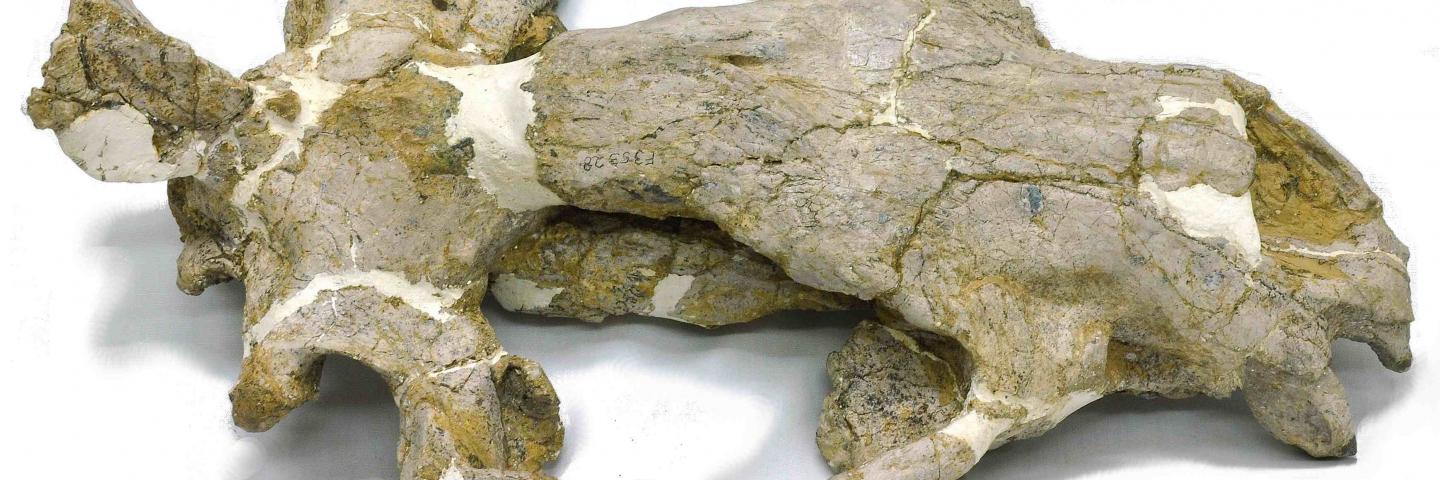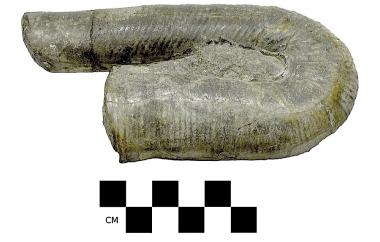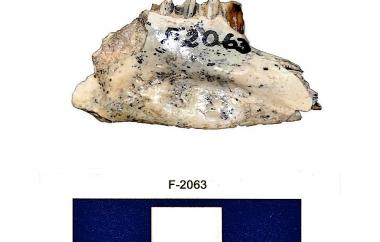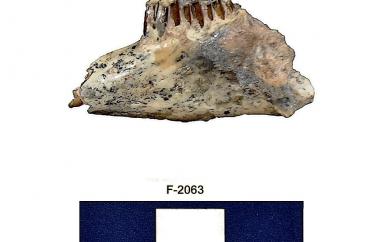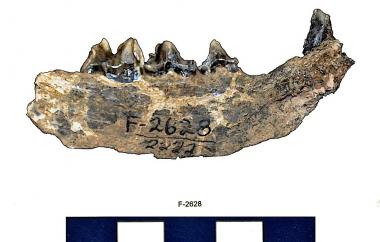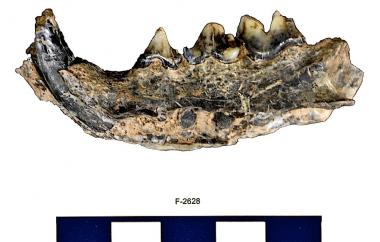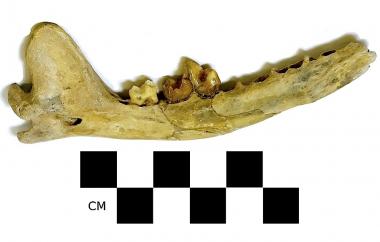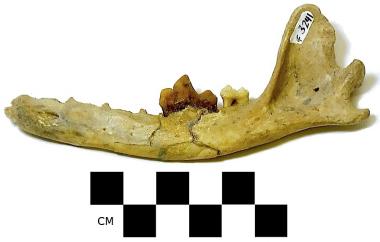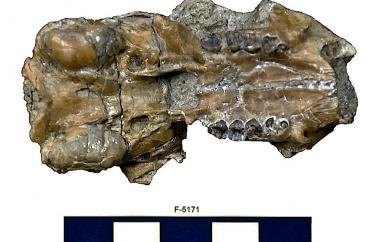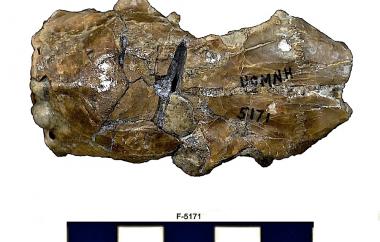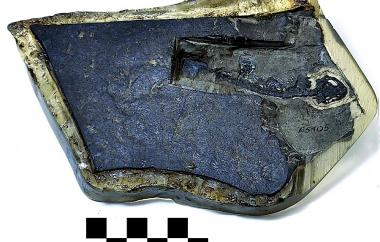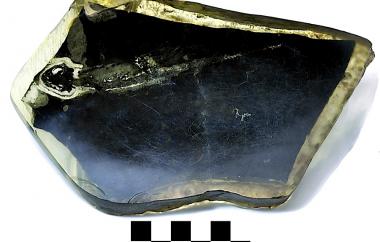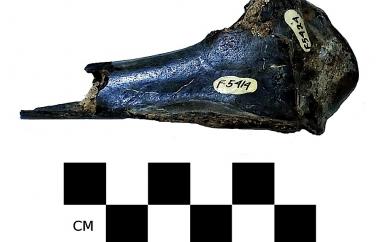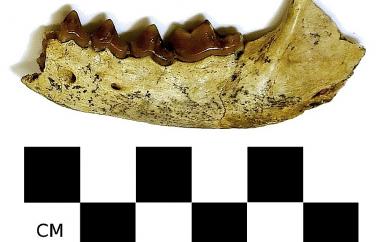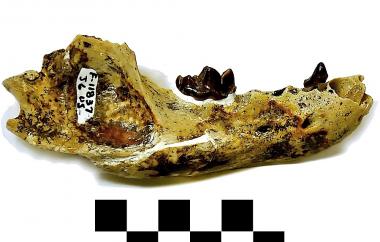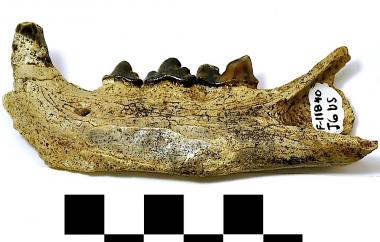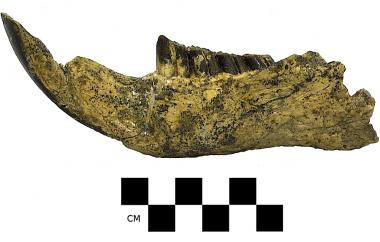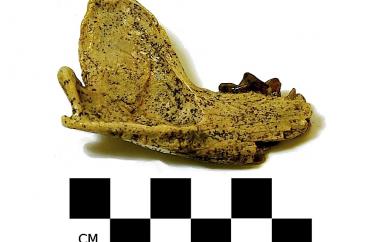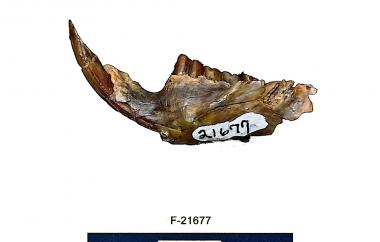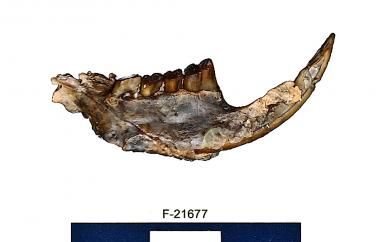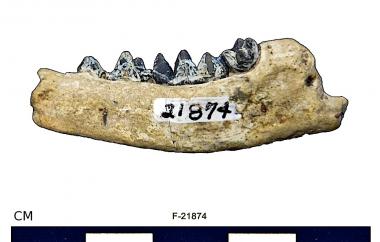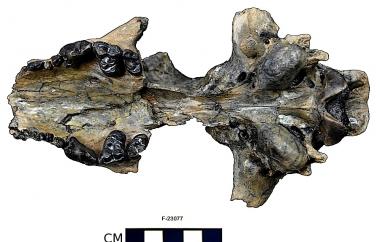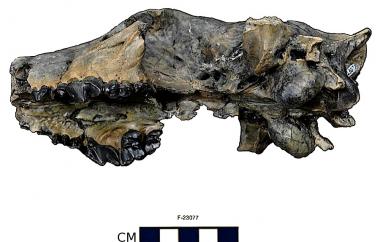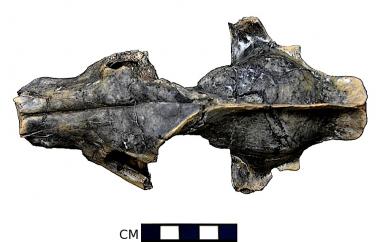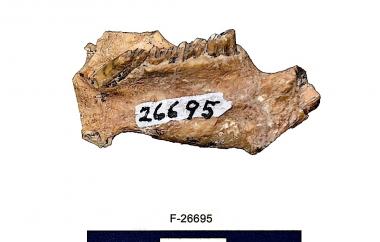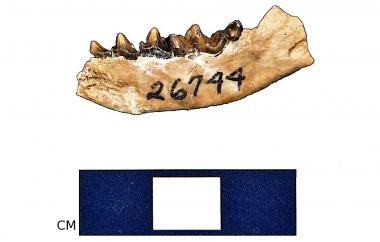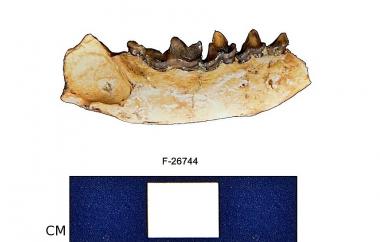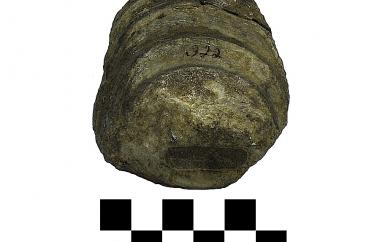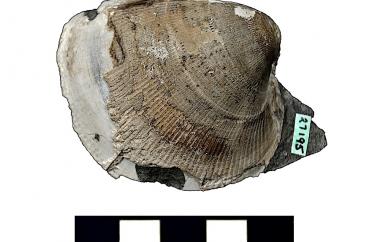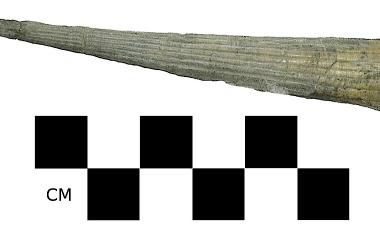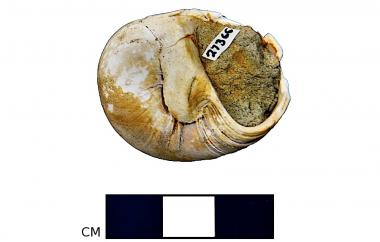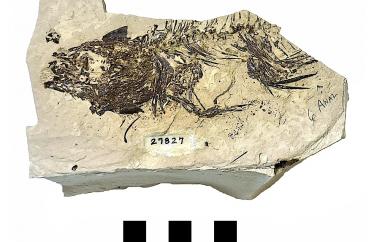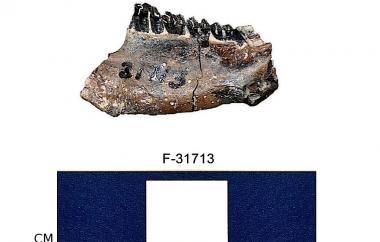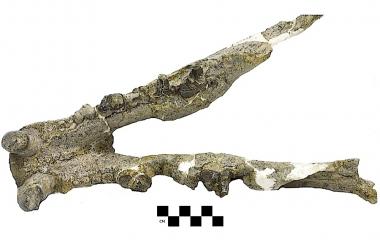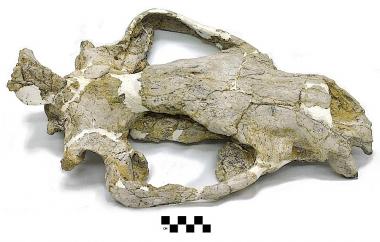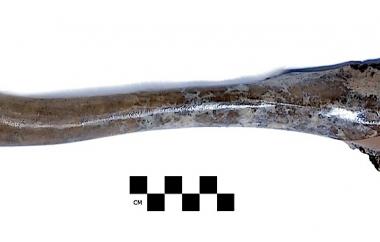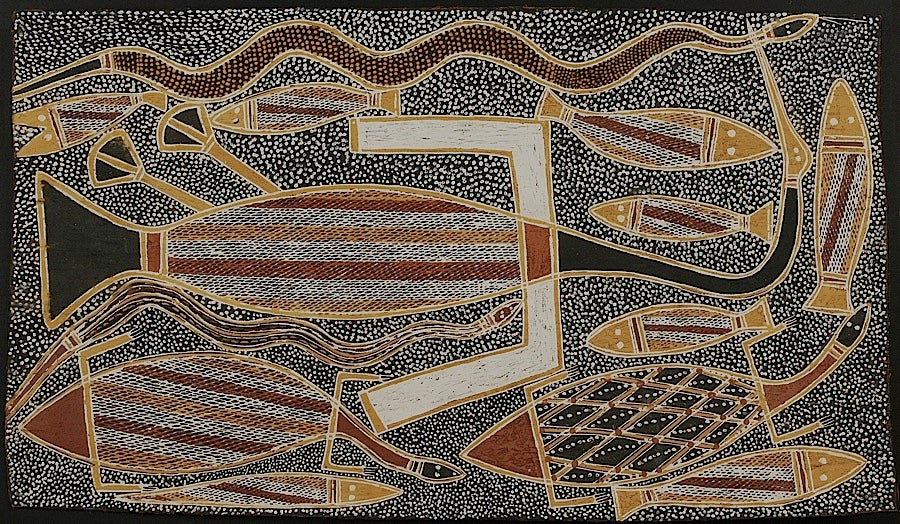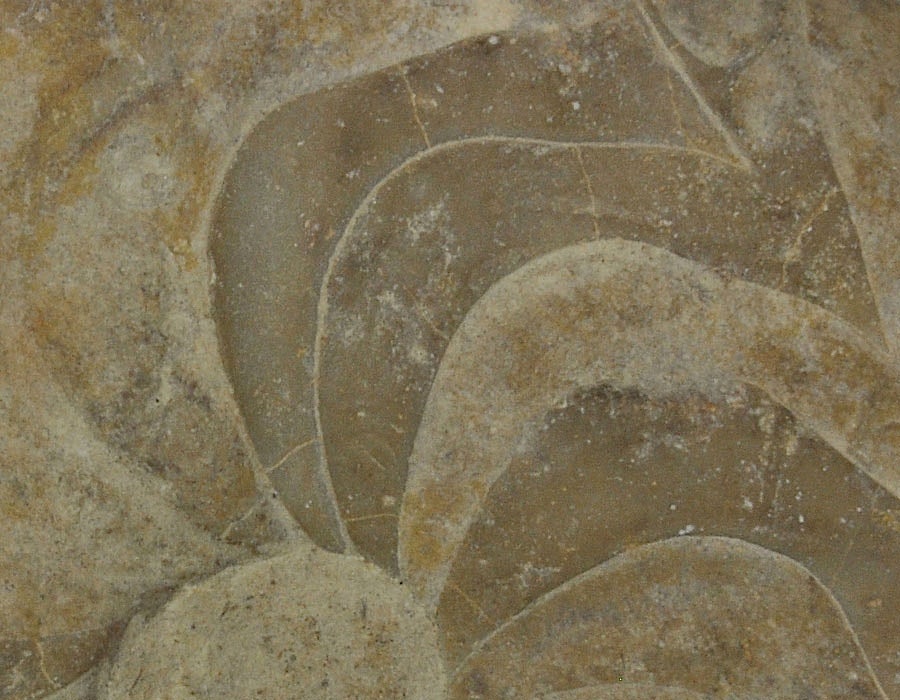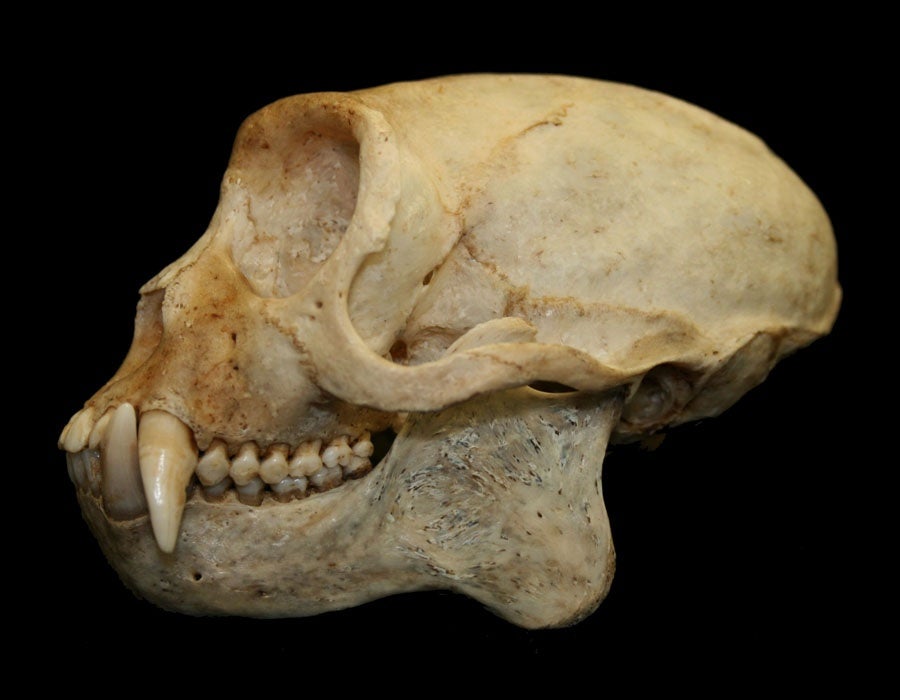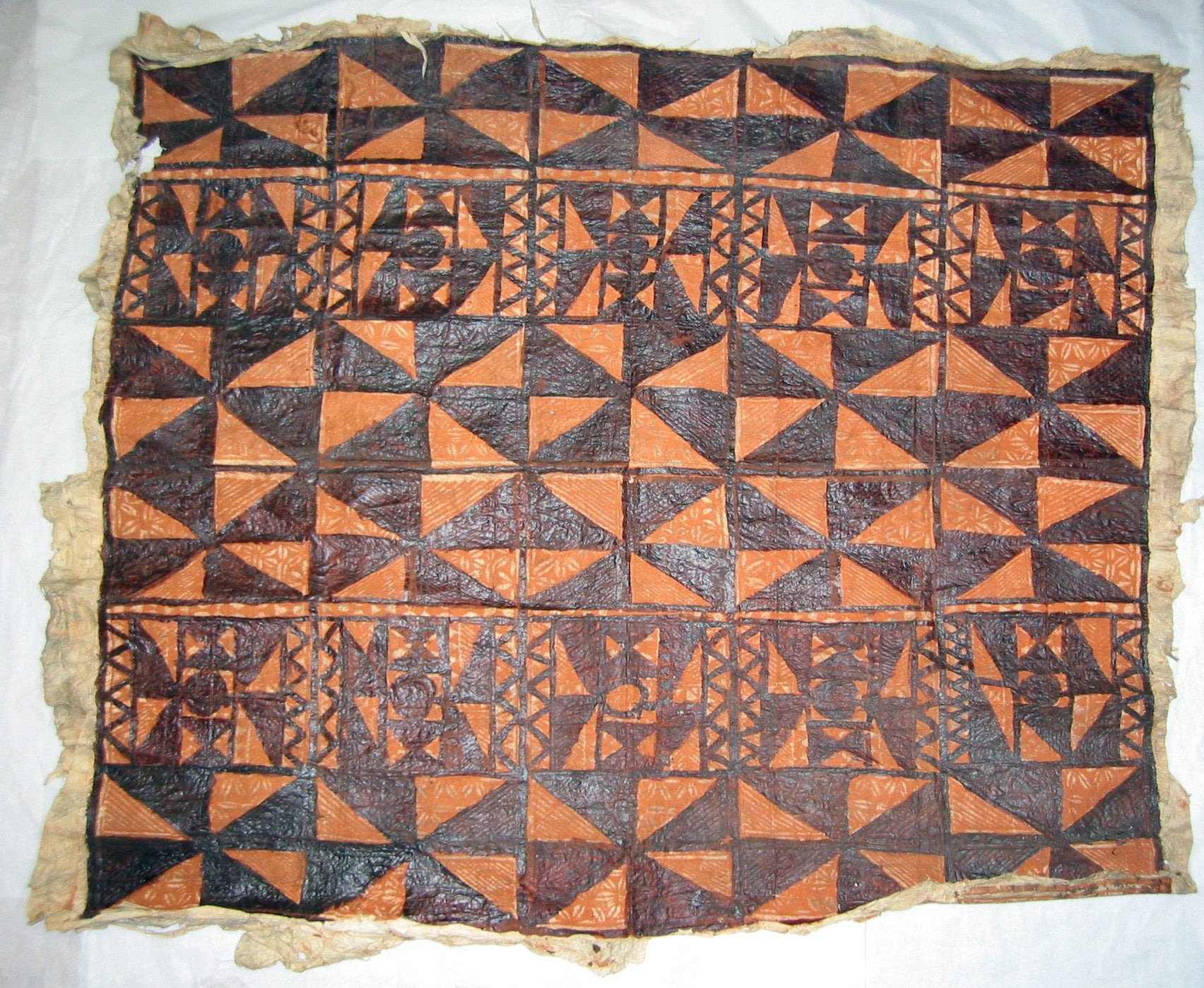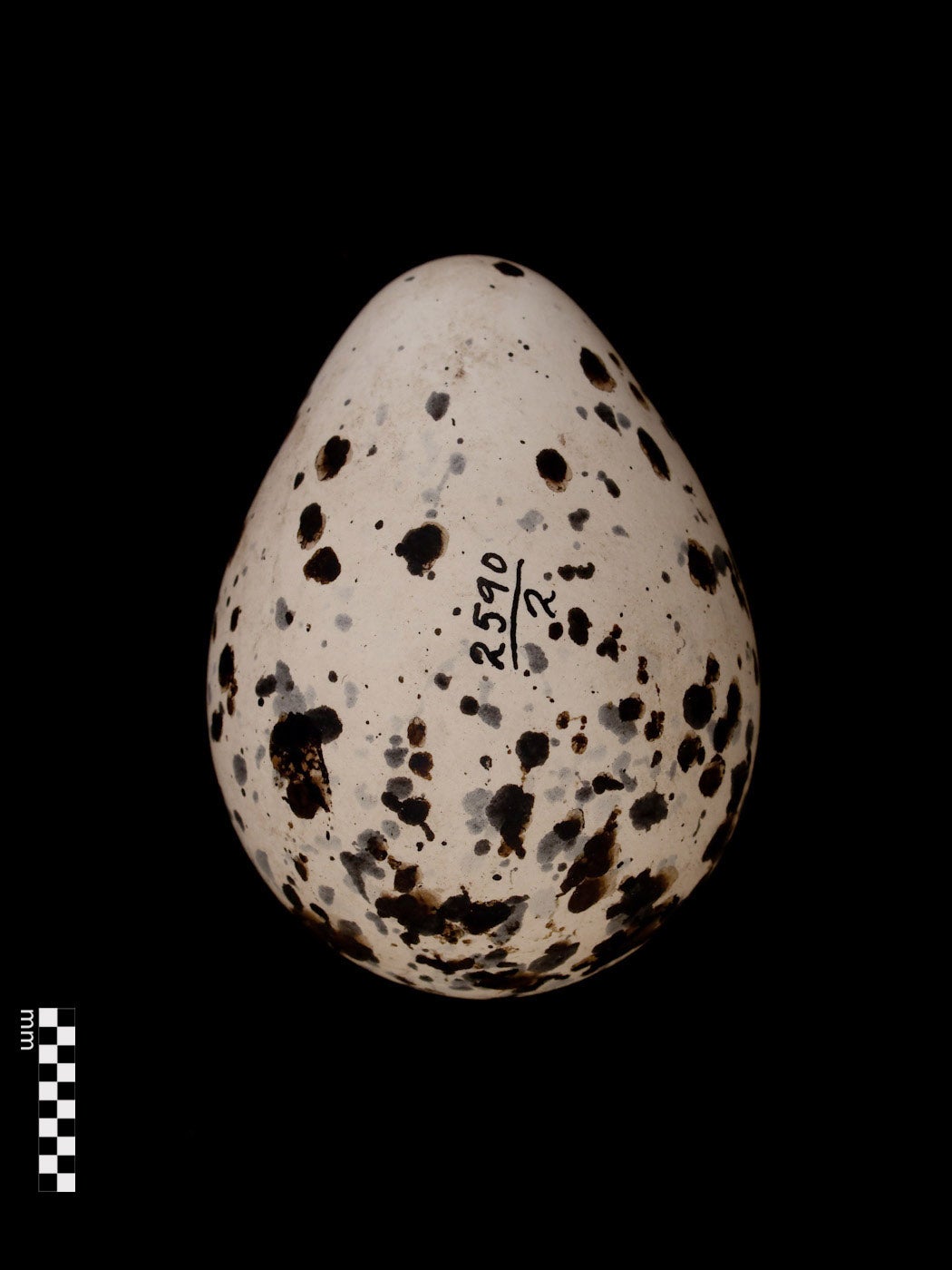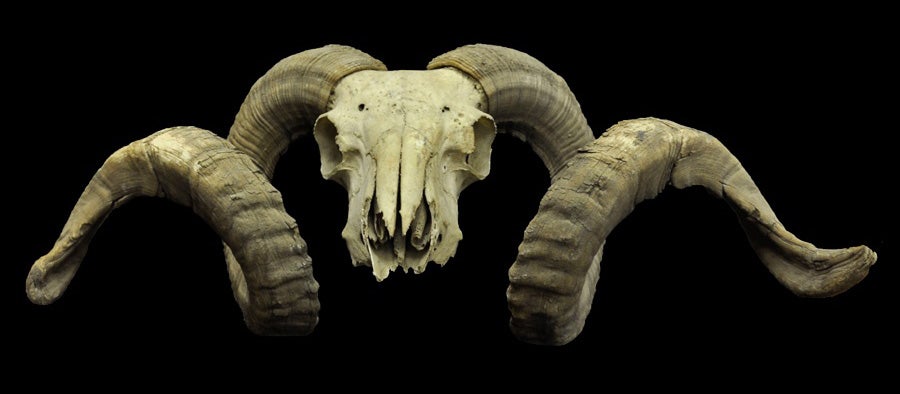The Condon Fossil Collection contains numerous "type specimens," a highly significant category in the field of paleontology. Fossil type specimens are the best examples of a new species at the time it is named.
When scientists describe a new species, they designate a single specimen as the "holotype" that best represents the new species. Technically, new scientific names such as Tyrannosaurus rex are attached to this specimen rather than the species. Because scientific names are often published before a full analysis of variation within a fossil species has taken place, a holotype can later be found to be atypical of the species.
At the time of first publication, a scientist may also designate "paratype" specimens she or he thinks belong to the same species and illustrate the range of variation known within the new species. Further research may reveal better preserved specimens that provide additional details to our knowledge of an ancient species, but type specimens remain significant for their historical value, the first of their kind, and as crucial resources for subsequent comparative analysis.
The type specimens in this gallery have been organized by their evolutionary relationships, progressing up the tree of life from invertebrates (clams, snails, etc.) to vertebrates--from fish to amphibians, then birds and several families of mammals. Images © UO Museum of Natural and Cultural History. Production of this gallery was generously supported by The Ford Family Foundation.
Ammonite partial shell, Diplomaceras mitchellense, Found at Mitchell, Wheeler County, Oregon, Cretaceous Period - Specimen #F-919
Rabbit mandible, side one, Hypolagus oregonensis, From McKay Reservoir, Umatilla County, Oregon, Miocene Epoch - Specimen #2063
Rabbit mandible, side two, Hypolagus oregonensis, From McKay Reservoir, Umatilla County, Oregon, Miocene Epoch - Specimen #2063
Fossil wildcat mandible, side one, Lynx longignathus, From McKay Reservoir, Umatilla County, Oregon, Miocene Epoch - Specimen #F-2628
Fossil wildcat mandible, side two, Lynx longignathus, From McKay Reservoir, Umatilla County, Oregon, Miocene Epoch - Specimen #F-2628
Fossil dog mandible, side one, Eucyon davisi, From McKay Reservoir, Umatilla County, Oregon, Miocene Epoch - Specimen #F-3241
Fossil dog mandible, side two, Eucyon davisi, From McKay Reservoir, Umatilla County, Oregon, Miocene Epoch - Specimen #F-3241
Squirrel skull, bottom view, Protosciurus condoni, From the John Day Formation, Eastern Oregon, Oligocene Epoch - Specimen #F-5171
Squirrel skull, top view, Protosciurus condoni, From the John Day Formation, Eastern Oregon, Oligocene Epoch - Specimen #F-5171
Fossil newt skeleton, side one, Paleotaricha oligocenica, From Goshen, Lane County, Oregon, Oligocene Epoch - Specimen #F-5405
Fossil newt skeleton, side two, Paleotaricha oligocenica, From Goshen, Lane County, Oregon, Oligocene Epoch - Specimen #F-5405
Fossil duck humerus, Eremochen russelli, From Juntura, Malheur County, Oregon, Miocene Epoch - Specimen #F-5414/F-5424
Fossil weasel mandible, Sthenictis juncturensis, From Poison Basin, Malheur County, Oregon, Miocene Epoch - Specimen #F-6694
Fossil otter mandible, Lutra ingens, From Jackass Butte, Owyhee County, Idaho, Pliocene Epoch - Specimen #F-11837
Fossil wildcat mandible, Puma lacustris, From Jackass Butte, Owyhee County, Idaho, Pliocene Epoch - Specimen #F-11840
Beaver mandible, Castor accessor, From Jackass Butte, Owyhee County, Idaho, Pliocene Epoch - Specimen #F-16337
Fossil grison mandible, Trigonictis idahoensis, From Jackass Butte, Owyhee County, Idaho, Pliocene Epoch - Specimen #F-16351
Fossil beaver mandible, side two, Monosaulax typicus, From Red Basin, Malheur County, Oregon, Miocene Epoch - Specimen #F-2167
Fossil badger mandible, Pliotaxidea nevadensis, From McKay Reservoir, Umatilla County, Oregon, Miocene Epoch - Specimen #F-21874
Fossil bone-crushing dog skull, bottom view, Tephrocyon rurestris, From Cottonwood Creek, Grant County, Oregon, Miocene Epoch - Specimen #F-23077
Fossil bone-crushing dog skull, side view, Tephrocyon rurestris, From Cottonwood Creek, Grant County, Oregon, Miocene Epoch - Specimen #F-23077
Fossil bone-crushing dog skull, top view, Tephrocyon rurestris, From Cottonwood Creek, Grant County, Oregon, Miocene Epoch - Specimen #F-23077
Fossil beaver mandible, Dipoides vallicula, From Little Valley, Malheur County, Oregon, Miocene Epoch - Specimen #F-26695
Fossil martin mandible, side one, Plionictis oregonensis, From Little Valley, Malheur County, Oregon, Miocene Epoch - Specimen #F-26744
Fossil martin mandible, side two, Plionictis oregonensis, From Little Valley, Malheur County, Oregon, Miocene Epoch - Specimen #F-26744
Fossil oyster upper valve, Plicatostylus gregarius, From Beaver Creek, Grant County, Oregon, Jurassic Period - Specimen #F-26853
Fossil cockle shell, Nemocardium formosum, From Eugene, Oregon, Oligocene Epoch - Specimen #F-27195
Fossil tusk shell, Dentalium laneensis, From Eugene, Oregon, Oligocene Epoch - Specimen #F-27332
Fossil moon snail shell, Neverita thomsonae, From Columbia County, Oregon, Oligocene Epoch - Specimen #F-27366
Fossil perch partial skeleton, Archoplites harneyensis, From Trout Creek, Harney County, Oregon, Miocene Epoch - Specimen #F-27827
Fossil beaver mandible, Monosaulax progressus, From the Quartz Basin, Malheur, County, Oregon, Miocene Epoch - Specimen #F-31713
Giant hyena-like animal mandible, Hemipsalodon grandis, From Clarno Mammal Quarry, Wheeler County, Oregon, Eocene Epoch - Specimen #F-35328
Giant hyena-like animal skull, Hemipsalodon grandis, From Clarno Mammal Quarry, Wheeler County, Oregon, Eocene Epoch - Specimen #F-35328
Giant terror-bird humerus, Teratorn woodburnensi, From Woodburn, Marion County, Oregon, Pleistocene Epoch - Specimen #F-36468
